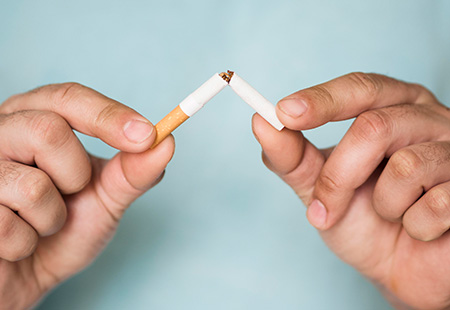Plaintiffs in injury and other civil cases don’t have to “prove” anything. Instead, they must establish key facts by a preponderance of the evidence. This Legalese phrase means “more likely than not.” That’s a much lower burden of proof than beyond a reasonable doubt, which is the standard of proof in criminal court.
Assume Mike and Ike, who are both drunk, are in the same car one night. Their car rear-ends a parked, empty vehicle. Under those facts, it’s almost impossible to prove, beyond a reasonable doubt, which one was driving the car. However, in civil court, where the burden of proof is lower, either Mike or Ike could be responsible for the wreck.
So, if Brenda worked in an old building that contained asbestos and she developed mesothelioma, she doesn’t have to “prove” how she got it. Instead, she must only show that it’s more likely than not that she was exposed to asbestos in that old building. This procedure seems straightforward. However, as outlined below, establishing liability in civil court is much easier said than done.
!
If you may have been exposed to asbestos, speak with your healthcare provider about tests and screening to help detect the presence of asbestos fibers and asbestos-related diseases.
The Burden of Proof and the Burden of Persuasion
Primarily, it’s difficult to establish liability because the victim/plaintiff has the burden of proof as well as the burden of persuasion. That’s quite a mouthful, so let’s break it down.
We hate to dump more Legalese on you, but a motion for summary judgment illustrates the difference between these two concepts.
The Federal Rules of Civil Procedure (FRCP) and
According to the Federal Rules of Civil Procedure, a judge must grant judgment for one side before trial if witness statements, medical reports, documents, and other “materials cited do not establish the absence or presence of a genuine dispute, or that an adverse party cannot produce admissible evidence to support the fact.”
In other words, the plaintiff, who has the burden of proof, must produce evidence to support its key points. But, that’s not enough to win the case. A jury must also side with the plaintiff over the defendant. That’s the burden of persuasion.
Part of the burden of persuasion is overcoming defenses, like the unforeseeable misuse defense in a defective product claim. Plaintiffs lose if they establish their cases but the defendant has a solid defense.
Establishing Liability
In civil court, the difference between liable (responsible) and not liable is liek the difference between guilty and not guilty in criminal court. Technically, criminal defendants never “prove their innocence” or “clear their names” in criminal court. But, that’s the subject of another blog.
To meet not only the burden of proof but also the burden of persuasion, asbestos exposure layers usually rely on three kinds of evidence:
- Lay Witnesses: Friends, family members, coworkers, and other individuals may testify about what they saw, heard, and know. For example, Brenda’s co-workers could testify that her boss had her do some demolition work in an old building without providing proper protection.
- Documentary Evidence: This proof usually includes the evidence produced during discovery, such as medical records, repair invoices, scientific reports, and other documents. Like they can with witness statements, defense lawyers may challenge either the admissibility or the weight of such evidence.
- Expert Witnesses: These witnesses usually interpret documentary evidence. For example, a doctor might testify that asbestos exposure caused Brenda’s illness. Different states have different rules as to who qualifies as an “expert” witness. Expert witnesses are usually professional witnesses who offer similar testimony in many different cases.
Expert witness testimony is often the most important evidence in an asbestos exposure case. In one recent case, a New York appeals court overturned a $16.5 million verdict in an asbestos-cosmetics case because the plaintiff’s expert didn’t precisely determine the exact amount of asbestos in Desert Powder cosmetics.
That’s a very ticky-tack ruling. But, it emphasizes how high the stakes are and how important it is to get it right.
Do You Qualify For Compensation?
Quickly and easily find out how you were exposed by searching W.A.R.D., the largest asbestos database on the planet.
FREE SEARCH >

Second-hand asbestos exposure (Secondary Asbestos Exposure)
Even the workers’ families were affected due to secondhand exposure—asbestos fibers are extremely durable and can cling to skin and clothing, traveling great distances with those directly exposed.
Asbestos fibers have no taste or smell, and can be microscopic, so you may not realize you were breathing them.
Unfortunately, many workers’ families and other household members were exposed to asbestos as well, as asbestos was brought home daily in neighborhoods across the U.S. on work-clothing.
This is often known as secondary or second-hand asbestos exposure (or domestic / household family asbestos exposure). In studies of asbestos disease, 1 in 5 cases of asbestos exposure were caused by secondary asbestos exposure.1
But spouses and children can also receive a share of the $30 Billion in asbestos trust compensation if they were exposed to asbestos brought into the house or family vehicle by a worker.
Damages Available
Plaintiffs must also prove their damages by a preponderance of the evidence, at least in most cases. Although some states have complex rules in this area, prior medical expenses, lost wages, and other economic losses are normally easy to establish. Future losses are more difficult to prove.
| Even lifelong smokers can collect compensation for asbestos damage. | |
  |
Many of our clients believed they weren’t eligible to file an asbestos lawsuit because they were cigarette and cigar smokers. This isn’t true under the laws of many states. Our database contains the medical evidence needed to show that smokers who are exposed to asbestos are far more likely to develop cancer than smokers who weren’t exposed to asbestos. Cigarettes and asbestos are far more dangerous than cigarettes or asbestos. |
| Even lifelong smokers can collect compensation for asbestos damage. |
  |
| Many of our clients believed they weren’t eligible to file an asbestos lawsuit because hey were cigarette and cigar smokers. This isn’t true under the laws of many states. Our database contains the medical evidence needed to show that smokers who are exposed to asbestos are far more likely to develop cancer than smokers who weren’t exposed to asbestos. Cigarettes and asbestos are far more dangerous than cigarettes or asbestos. |
Do You Qualify For Compensation?
Quickly and easily find out how you were exposed by searching W.A.R.D., the largest asbestos database on the planet.
FREE SEARCH >Damages for Asbestos Claims: Non-economic and punitive damages
Non-economic losses, such as pain and suffering, are difficult to establish as well. How can anyone put a price tag on something like the inability to see a grandchild graduate from high school? Usually, attorneys multiply the economic losses by two, three, or four, depending on the evidence and some other factors, and ask jurors to award that amount.
Punitive damages are a bit different. These damages, which are very common in asbestos exposure cases, are available if the plaintiff shows, by clear and convincing evidence, that the defendant intentionally disregarded a known risk. C&CE is a standard of proof between a preponderance of the evidence and beyond a reasonable doubt.
AsbestosClaims.Law
For Justinian C. Lane, getting compensation for asbestos victims is personal.
Justinian’s grandparents and his father all worked with asbestos in their younger years and died from asbestos-related cancers in their later years.
At the time of each of their deaths, no one in Justinian’s family knew that they were eligible to file an asbestos lawsuit and to seek compensation from the asbestos trusts.
Because no one in Justinian’s family knew their options, they never received any compensation for the death of their loved ones.
If you believe that you or your family member’s injury was related to asbestos exposure, you could be entitled to significant compensation.
This is money you could use to cover the costs of asbestos removal services, pay for medical treatment, and preemptively protect your physical well-being.
There are also asbestos trusts that offer compensation much more quickly and easily (without filing a lawsuit.)
If you’d like help with filing a claim, please get in touch by email at [email protected], or call or text us at (833) 4-ASBESTOS (427-2378) or (206) 455-9190. We’ll listen to your story and explain your options. And we never charge for anything unless you receive money in your pocket.
In addition to legal claims, veterans disability, social security and employment protection like workers compensation, FELA and The Jones Act for maritime workers, there are asbestos trusts that have been set up to compensate those harmed by asbestos without having to file a lawsuit.
There is no risk or cost to speak with one of our staff about your asbestos litigation. There are no fees unless you receive money.
If you have any additional questions or concerns related to asbestos, check out our website and YouTube page for videos, infographics and answers to your questions about asbestos, including health and safety, asbestos testing, removing asbestos from your home and building, and legal information about compensation for asbestos injuries.
Introducing the largest database of asbestos information on the planet.
W.A.R.D., which stands for the Worldwide Asbestos Research Database, helps clients to narrow down when and where they may have been exposed, as well as which products may still contain asbestos. W.A.R.D. will also help indicate compensation types and how much a person may be entitled to.
1 Tompa E, Kalcevich C, McLeod C, Lebeau M, Song C, McLeod K, et al. The economic burden of lung cancer and mesothelioma due to occupational and para-occupational asbestos exposure. Occup Environ Med 2017; 74: 816-22.




